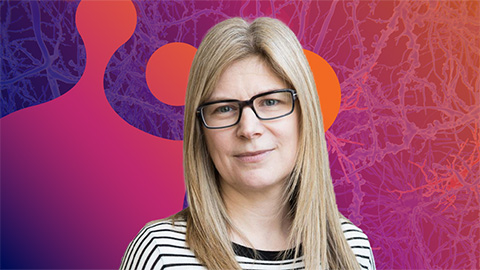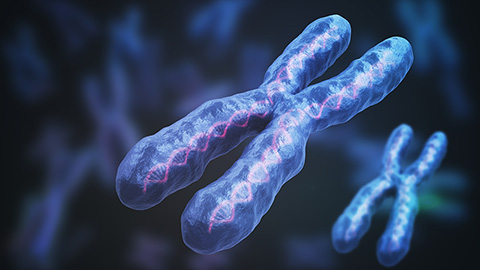
Out with the old, in with the nucleus
Are you tired of binging reruns on Netflix? Maybe you need a break from reality TV but you’re not sure where to turn for high-quality entertainment? Look no further — the nucleus has it all. There’s mystery, murder, machines of extraordinary complexity and visually stunning landscapes.
Stories in nuclear signaling are unraveling at an unprecedented pace thanks to technological and conceptual advances in chemistry, biochemistry and cell biology. Our speakers will address long-standing questions about organism development, cellular identity and the genetic basis for disease.
Submit an abstract
Abstract submission begins Sept. 14. If you submit by Oct. 12, you'll get a decision by Nov. 1. The regular submission deadline is Nov. 30. See the categories.
You will hear about how cutting-edge interdisciplinary approaches are being used to uncover new regulatory mechanisms underlying transcription, genome structure, and other phenomena in the nucleus. We will also discuss how rapid progress in the field is inspiring new therapeutic approaches for diseases related to dysfunctional nuclear processes.
You don’t want to miss this — even the cytosol junkies will be on the edge of their seats.
Keywords: Enzyme mechanism, genetics and disease, chemical probes, transcription regulation, chromatin modifications, genome structure.
Who should attend: You. Our speakers span a wide breadth of biological phenomena, scientific disciplines and technologies. We have something for everyone. Current projections: standing room only.
Your session’s theme song: “Journey to the Island” by John Williams
This song is about the most important genetics experiment ever performed.
This session is powered by “hot, nasty, bad-*ss speed.” — Eleanor Roosevelt, Talladega Nights
Signaling mechanisms in the nucleus
Chemical strategies to study nuclear processes
Chair: Aaron Johnson
Anna Mapp, University of Michigan

Glen Liszczak, University of Texas Southwestern Medical Center
Oliver Bell, University of Southern California Kerk School of Medicine
Minkui Luo, Memorial Sloan Kettering Cancer Center
Chromatin organization, replication and repair
Chair: Katharine Diehl
Aaron Streets, University of California, Berkeley
Aaron Johnson, University of Colorado Anschutz Medical Campus
Carl Wu, Johns Hopkins University
Serena Sanulli, Stanford University
Chromatin modifications in the nucleus
Chair: Glen Liszczak
Alex Ruthenberg, University of Chicago
Katharine Diehl, University of Utah
Tim Stasevich, Colorado State University
Phil Cole, Harvard University
Enjoy reading ASBMB Today?
Become a member to receive the print edition four times a year and the digital edition monthly.
Learn moreGet the latest from ASBMB Today
Enter your email address, and we’ll send you a weekly email with recent articles, interviews and more.
Latest in Science
Science highlights or most popular articles

Bacteriophage protein could make queso fresco safer
Researchers characterized the structure and function of PlyP100, a bacteriophage protein that shows promise as a food-safe antimicrobial for preventing Listeria monocytogenes growth in fresh cheeses.

Building the blueprint to block HIV
Wesley Sundquist will present his work on the HIV capsid and revolutionary drug, Lenacapavir, at the ASBMB Annual Meeting, March 7–10, in Maryland.

Gut microbes hijack cancer pathway in high-fat diets
Researchers at the Feinstein Institutes for Medical Research found that a high-fat diet increases ammonia-producing bacteria in the gut microbiome of mice, which in turn disrupts TGF-β signaling and promotes colorectal cancer.

Mapping fentanyl’s cellular footprint
Using a new imaging method, researchers at State University of New York at Buffalo traced fentanyl’s effects inside brain immune cells, revealing how the drug alters lipid droplets, pointing to new paths for addiction diagnostics.

Designing life’s building blocks with AI
Tanja Kortemme, a professor at the University of California, San Francisco, will discuss her research using computational biology to engineer proteins at the 2026 ASBMB Annual Meeting.

Cholesterol as a novel biomarker for Fragile X syndrome
Researchers in Quebec identified lower levels of a brain cholesterol metabolite, 24-hydroxycholesterol, in patients with fragile X syndrome, a finding that could provide a simple blood-based biomarker for understanding and managing the condition.


